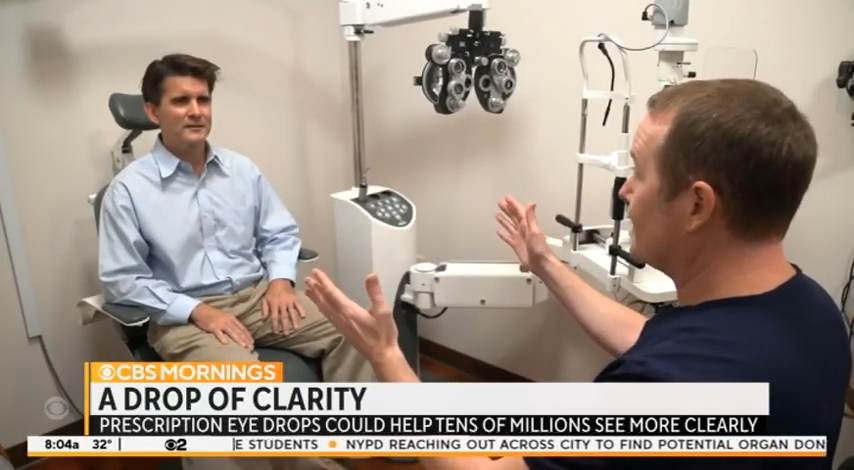Treatment for presbyopia may be similar to treatment for farsightedness. Our ophthalmologist may suggest one of the following treatment options based on your specific needs:
- CLEAR® (Custom Lens Replacements) CLEAR® is a custom lens extraction and replacement for the treatment of DLS. The procedure is carefully and specifically designed to restore both close-up vision and distance vision with a crystal clear restorative implant that lasts a lifetime and prevents further progressive deterioration of vision due to cataracts.
- VUITY. VUITY is a once-daily prescription eye drop that improves near and intermediate vision without impacting distance vision for adults with age-related blurry near vision. It is the first and only eye drop approved by the U.S. Food and Drug Administration (FDA) to treat presbyopia.
- Contacts. Some people who prefer contacts can opt for multifocal contact lenses, which will correct both nearsightedness and farsightedness. In some cases, a different prescription for each eye is effective: one for nearsightedness and one for farsightedness. Over time the brain adjusts, and favors the right eye for specific needs. The time it will take to adjust to these contacts will vary from client to client, usually within weeks at most.
- Surgery. Glasses can interfere with your peripheral vision, and contacts create a daily routine and require dexterity and the uncomfortable task of touching your eyes twice a day. Surgery can eliminate those worries and improve your sight with limited discomfort and downtime. Surgical options involve either modifying the shape of the existing lens with laser technology, or completely replacing the lens. There are many different types of surgery, including a treatment that provides an effect similar wearing two contacts with separate focuses. Alternatively, laser lens replacement has become a mainstay of presbyopia treatment. Laser lens replacement (RLE) has the distinct advantages of keeping your eyes balanced for distance and near tasks and can prevent cataracts. Our ophthalmologist will advise you of the most effective and appropriate treatment to correct your vision.



